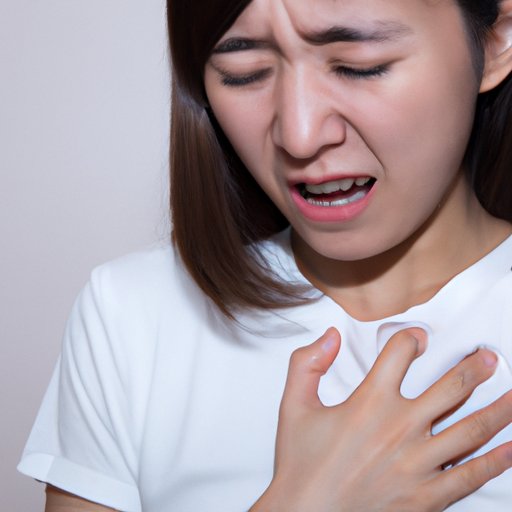
Introduction
A heart attack, also known as myocardial infarction, occurs when blood flow to the heart is blocked, resulting in damage to the heart muscles. Heart attacks can be life-threatening and require immediate medical attention. Recognizing the symptoms of a heart attack is crucial to prevent further damage and increase the chances of survival.
Common Symptoms of a Heart Attack
The following symptoms are the most common indicators of a heart attack:
- Chest pain: Tightness, pressure, or squeezing pain in the chest that may last for a few minutes or come and go.
- Shortness of breath: Difficulty breathing or feeling out of breath.
- Nausea: Feeling sick to your stomach, vomiting, or indigestion.
- Other typical symptoms: Dizziness, lightheadedness, sweating, and discomfort in the arms, back, neck, or jaw.
If you experience these symptoms, it is important to seek medical attention immediately.
Subtle Indications of a Heart Attack
Heart attacks can also have more subtle indications, which are important to recognize:
- Jaw pain: Pain in the jaw, throat, or even the ear.
- Back pain: Discomfort in the upper back, shoulders, or arms.
- Fatigue: Feeling overly tired and weak.
- Other atypical symptoms: Shortness of breath without chest pain, sudden sweating, or flu-like symptoms.
If you experience these symptoms, do not ignore them and seek medical attention immediately.

Symptoms of a Heart Attack in Women
Women may experience different symptoms during a heart attack, including:
- Abdominal pain: Pain or discomfort in the stomach, upper abdomen, or lower chest.
- Dizziness: Feeling light-headed, dizzy, or faint.
- Other symptoms specific to women: Unexplained fatigue, sweating, nausea, vomiting, or shortness of breath.
It is important to note that women may not experience chest pain like men often do during a heart attack.
Differences in Symptoms of a Heart Attack Between Men and Women
While chest pain is the most common symptom for both men and women, there are some differences in the symptoms they experience:
- Women are more likely to have shortness of breath, nausea, vomiting, stomach pain, and back or jaw pain during a heart attack.
- Men are more likely to have chest pain or discomfort during a heart attack.
It is important to be aware of these differences to recognize the symptoms of a heart attack in both men and women.
Early Symptoms of a Heart Attack – What You Need to Know
Early indicators of a heart attack may include:
- Chest discomfort: Feeling of pressure, squeezing, or fullness in the chest that may come and go.
- Indigestion: Feeling of discomfort or burning in the stomach or chest.
- Other early indicators: Jaw pain, back pain, or shortness of breath with or without chest pain.
Recognizing these early symptoms and seeking medical attention can help prevent further damage to the heart.
Unusual Symptoms of a Heart Attack You Need to Watch Out For
Some unusual symptoms that may indicate a heart attack include:
- Swelling in the legs and arms: Swelling in the arms, legs, or ankles could be a sign of a heart attack.
- Other uncommon signs: Cold sweats, sudden dizziness, confusion, racing heartbeat, or heart palpitations.
Although these symptoms may not always indicate a heart attack, it is important to seek medical attention to rule out any serious conditions.
Conclusion
Recognizing the symptoms of a heart attack early on can be life-saving. It is important to be aware of the common and subtle indications of a heart attack, especially those specific to women. If you or someone you know experiences any symptoms of a heart attack, do not ignore them and seek medical attention immediately.
Remember, early detection can make all the difference in the outcome.





